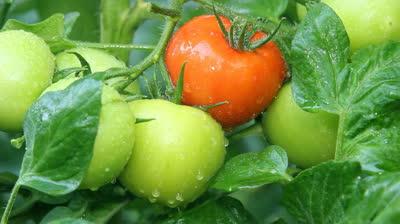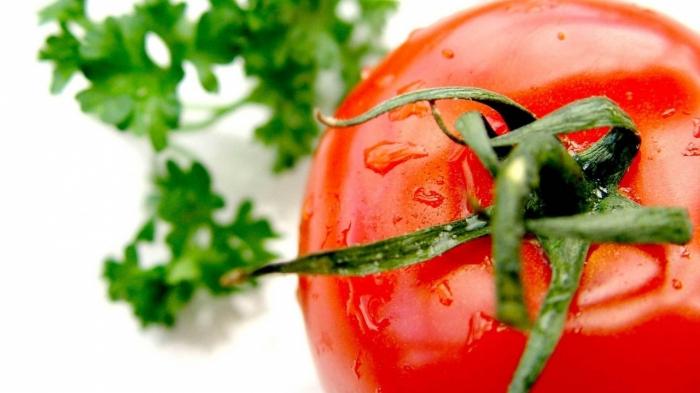Many summer residents have the opinion that watering tomatoes in a greenhouse should be daily and plentiful. Unfortunately, this is an absolutely wrong approach. A distinctive feature of this type of cultivated plant is the deep location of the root system. In addition to water, they also need the presence of loose soil so that the roots can breathe. Therefore, planting tomatoes in a greenhouse, watering should be organized somewhat differently.
Microclimate of greenhouses in Central Russia
In Central Russia , air humidity from spring to autumn is from 60 to 85%. In particularly hot years, which turned out to be 2010, this parameter in August did not rise above 40%. But this is rather an exception to the rule. Typically, hot days alternate with rains when the air humidity is more than 90%. In sheltered ground, the air temperature is higher than ambient on cloudy days by 10 ... 13 ° C, and on sunny days it is more than 20 ... 28 ° C. Therefore, excess water at high humidity negatively affects tomatoes in the greenhouse. Watering should be buried to the roots. To avoid waterlogging, arrange ventilation. It does not always give the desired result, as a result of which the growth of putrefactive fungi begins. The black leg is a frequent visitor in moist greenhouses where tomatoes are grown. Since mid-July, when the likelihood of precipitation increases, late blight develops - a clear sign that condensate from the inner surface of the transparent fences has appeared on the leaves and has begun its detrimental effect.

How much to water tomatoes in a greenhouse, recommendations from abroad
Foreign authors advertise complete watering systems for plants. From their videos you can see how a stream of water scattered by shower sprays washes tomatoes from top to bottom. At the same time, the voice-over text in a cheerful voice broadcasts about high yields and their quality. One could believe them. It is only embarrassing that the taste of imported tomatoes is far from the usual. To arrange such irrigation, foreign vegetable growers use so many chemical plant protection products that they completely remove the feeling of the presence of real fruits. In the pictures from abroad you can see beautiful tomatoes in the greenhouse, watering them did not spoil. But there is another truth that advertisers and watering equipment manufacturers do not like to show. Only a small part of the harvest of the first harvest looks so beautiful, a bit later the disease nullifies all efforts to grow tomatoes.
How to really water tomatoes
It has already been mentioned that the root system of nightshade crops is 20-25 cm below the soil level. Tomato roots in the greenhouse form rather deeply. Watering should therefore be directed to the bottom of the roots. Some critics may argue that, for example, in Israel, water continuously drips near the root, and the plants do not detect any diseases. Of course, there it is permissible. But only for one reason - tomatoes in southern countries are grown in open ground in the absence of atmospheric moisture, relative humidity rarely rises above 40%. In the same Israel, morning dew occurs only during the winter, and the temperature on the coldest days rarely drops below 8 ° C. In 2012, there were a few cold days when the temperature approached zero. Several people froze to death, and in residential buildings (there is no heating there) it was rather uncomfortable. There is only one conclusion: in our conditions, growing tomatoes in a greenhouse, watering should be organized deep into the soil to reduce air humidity.

How to prepare the soil in a greenhouse
In structures of sheltered soil before laying a new soil layer at a depth of 20-25 cm, a moisture accumulator should be laid. Moss, gel, used sponges for washing and other objects that concentrate moisture will keep it at a given level. Above is the soil or substrate. Feeder tubes must be brought to the moisture accumulator, through which water, bypassing the top soil layer, will penetrate downward. Now you can organize drip irrigation of a tomato in a greenhouse. When growing tomatoes, there is also such a thing as “dry watering”. In fact, it is loosening the soil near the roots to saturate the upper layer with air.
Provided that these recommendations are followed, our gardeners can count on obtaining a real high yield with excellent quality of tomato fruits.